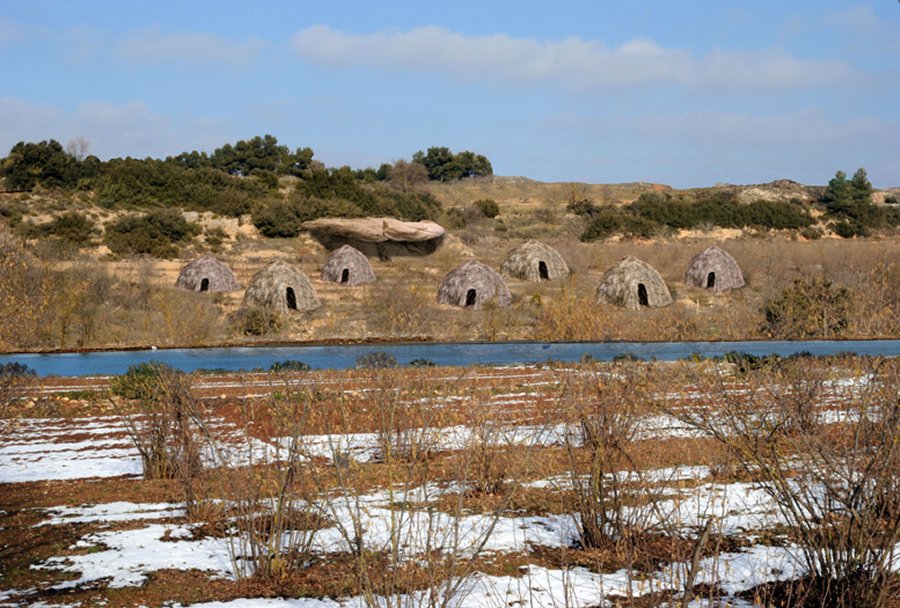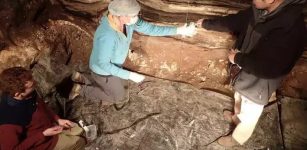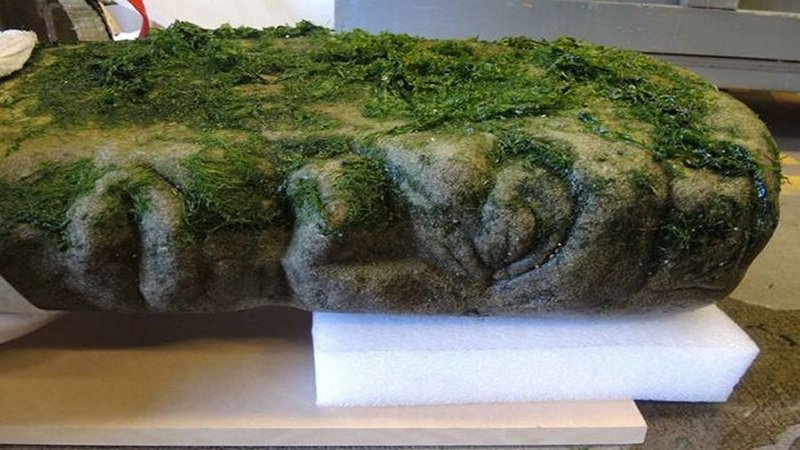13,000-Year-Old Engraving May Depict First Paleolithic Social Group Of Humans
MessageToEagle.com – 13,000 year-old engraving uncovered in Spain may depict a hunter-gatherer campsite, according to researchers Marcos García-Diez from University of the Basque Country, Spain, and Manuel Vaquero from Catalan Institute of Human Palaeoecology and Social Evolution – IPHES, Spain.
It’s a unique piece of mobile art at an Upper Palaeolithic level and according to Manuel Vaquero this “palaeolithic engraving from northeastern Spain brings us the first representation of a human social group.”

Landscapes and features of the everyday world are scarcely represented in Palaeolithic art. The schist slab has seven engraved semicircular motifs with internal lines arranged in two rows. Because of its shape and proportions, the authors have interpreted these motifs as huts.
Microscopic and comparative analysis indicate that the seven motifs were engraved using a similar technique and instrument in a very short time.

The archaeological context of the site reinforces this interpretation of the engraving. In front of the rockshelter, there is a plain descending to the river, which is located 100 m south of the site.
This setting has been documented for some open-air Magdalenian sites interpreted as campsites and is characterized by well-defined clusters of remains corresponding to domestic areas, say the researchers. It therefore seems likely that the engraving is representational of this setting.
- Magdalenian was one of the later cultures of the Upper Paleolithicin western Europe, dating from around 17,000 to 12,000 years ago toward the end of the last Ice Age.
- The culture was geographically widespread, and later Magdalenian sites have been found from Portugal in the west to Poland in the east.
- Being hunter gatherers, Magdalenians did not simply re-settle permanently in north-west Europe, however, as they often followed herds and moved depending on seasons.
 Magdalenian settlement in Gönnersdorf, 12 500 BP, RGZM special exhibition in Mainz 1975. Credits: landschaftsmuseum.de/
Magdalenian settlement in Gönnersdorf, 12 500 BP, RGZM special exhibition in Mainz 1975. Credits: landschaftsmuseum.de/
The analysis of the engraving suggests that this is a naturalistic depiction of a hunter-gatherer campsite.
While scientists can’t be absolutely sure what the engraving depicts, the authors of this study suggest this engraving may be one of the first representations of the domestic and social space of a human group.
The study is published in the journal PLOS ONE (open access).
MessageToEagle.com via AncientPages.com
source: PLOS










